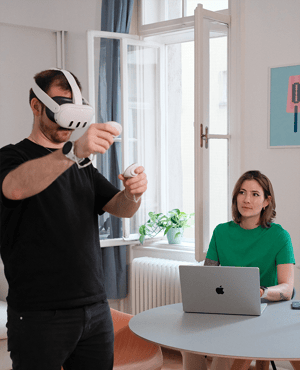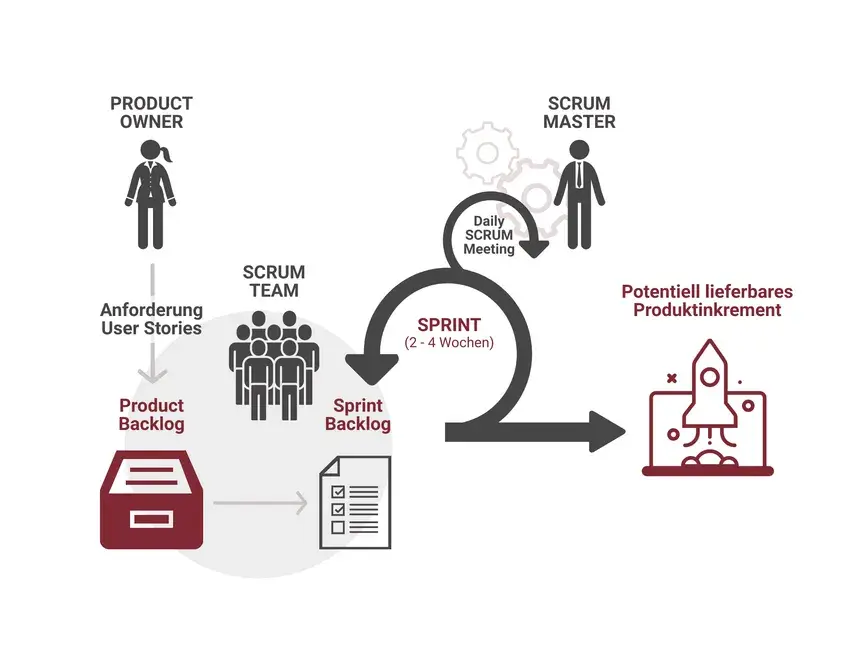
Working method
We prefer to view the entire process at the machine, from the product idea and development to commissioning.
Human-Centered Design Process

Design system
Design systems are the foundation of consistent design. We have a system that continuously updates to meet user needs and is specifically tailored to handle the requirements of machinery and special-purpose machine design.
Use Case Matrix
Over 25 years, we’ve gained experience with many use cases, resulting in a well-developed toolbox of versatile solutions. With these proven tools, we rarely need to reinvent the wheel. This expertise, combined with the cost savings from avoiding unnecessary new developments, allows us to pass on substantial benefits to our clients.

Lean UX
CI/CD, DevOps
In the fast-paced world of mechanical engineering, agile and efficient software development is essential. By implementing Continuous Integration (CI) and Continuous Deployment (CD), we optimize development processes and enhance software quality. These practices enable quicker development cycles, faster customer response times, and more stable software through automated testing, ensuring new features are stable and existing ones are not disrupted. This approach leads to faster market delivery, continuous improvements, and overall higher-quality software solutions tailored for modern engineering needs.
Why CI/CD?
CI/CD allows us to quickly and continuously integrate and deploy code changes. This results in shorter development cycles and faster response times to customer needs. Automated testing ensures the stability of new features while maintaining the integrity of existing ones. The process streamlines workflows, allowing for faster innovation and reliable software solutions.
What does it bring to our projects and customers?
By identifying and resolving errors early, CI/CD reduces risks and lowers costs. Clients benefit from faster time-to-market, continuous improvements, and higher software quality. Ultimately, CI/CD results in more robust and flexible HMI solutions that meet the demands of modern machine engineering.

Scrum
Flexibility and adaptability
Scrum facilitates rapid iterations and regular feedback, allowing us to remain flexible and adapt quickly to changes. This agile methodology ensures that we can continuously improve the product and better meet customer requirements throughout the development process.
Higher software quality
Through continuous testing and adjustments, the quality of our HMI solutions is significantly improved.
Customer benefit
Customers benefit from customized, user-friendly solutions that are developed more efficiently and delivered faster.
